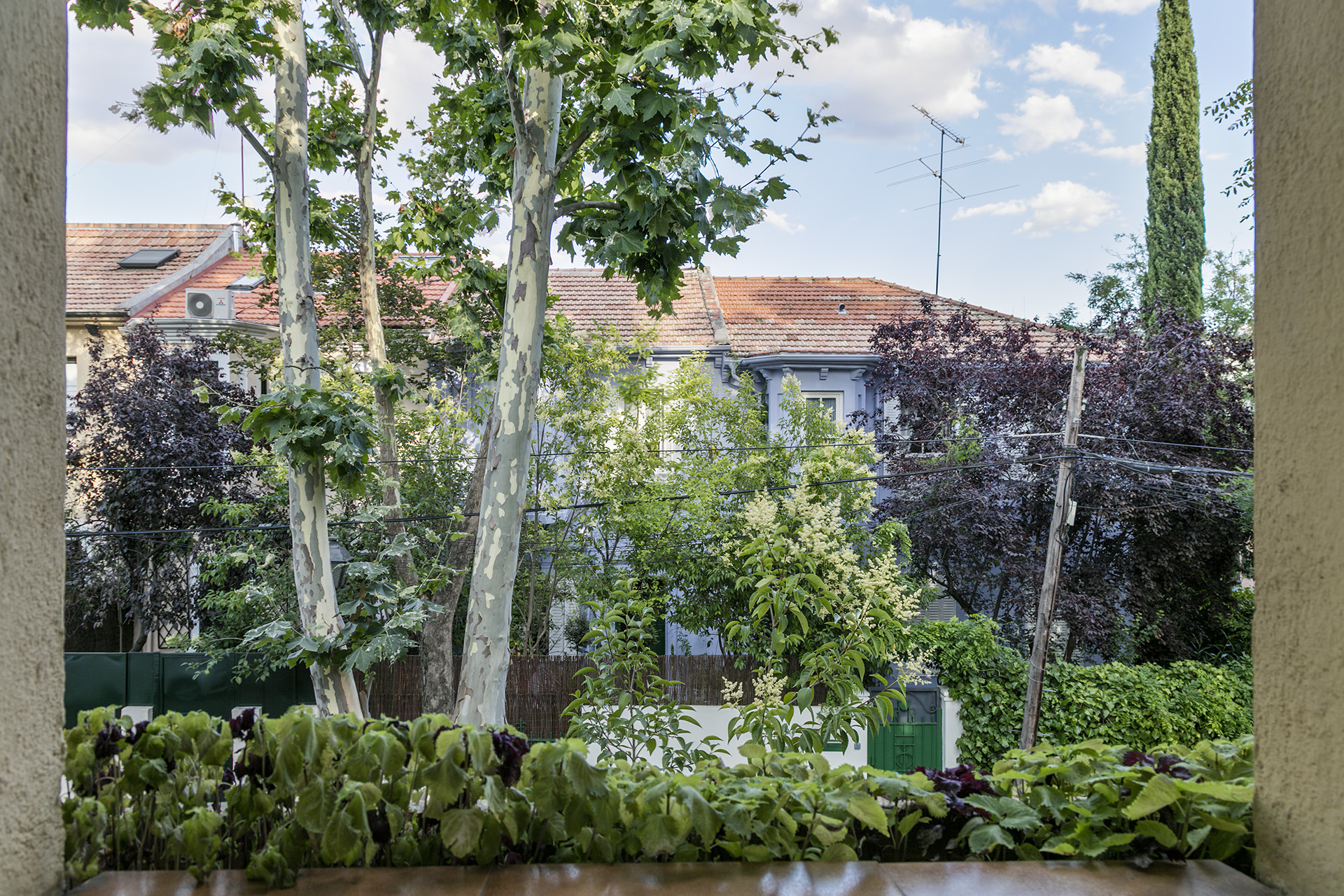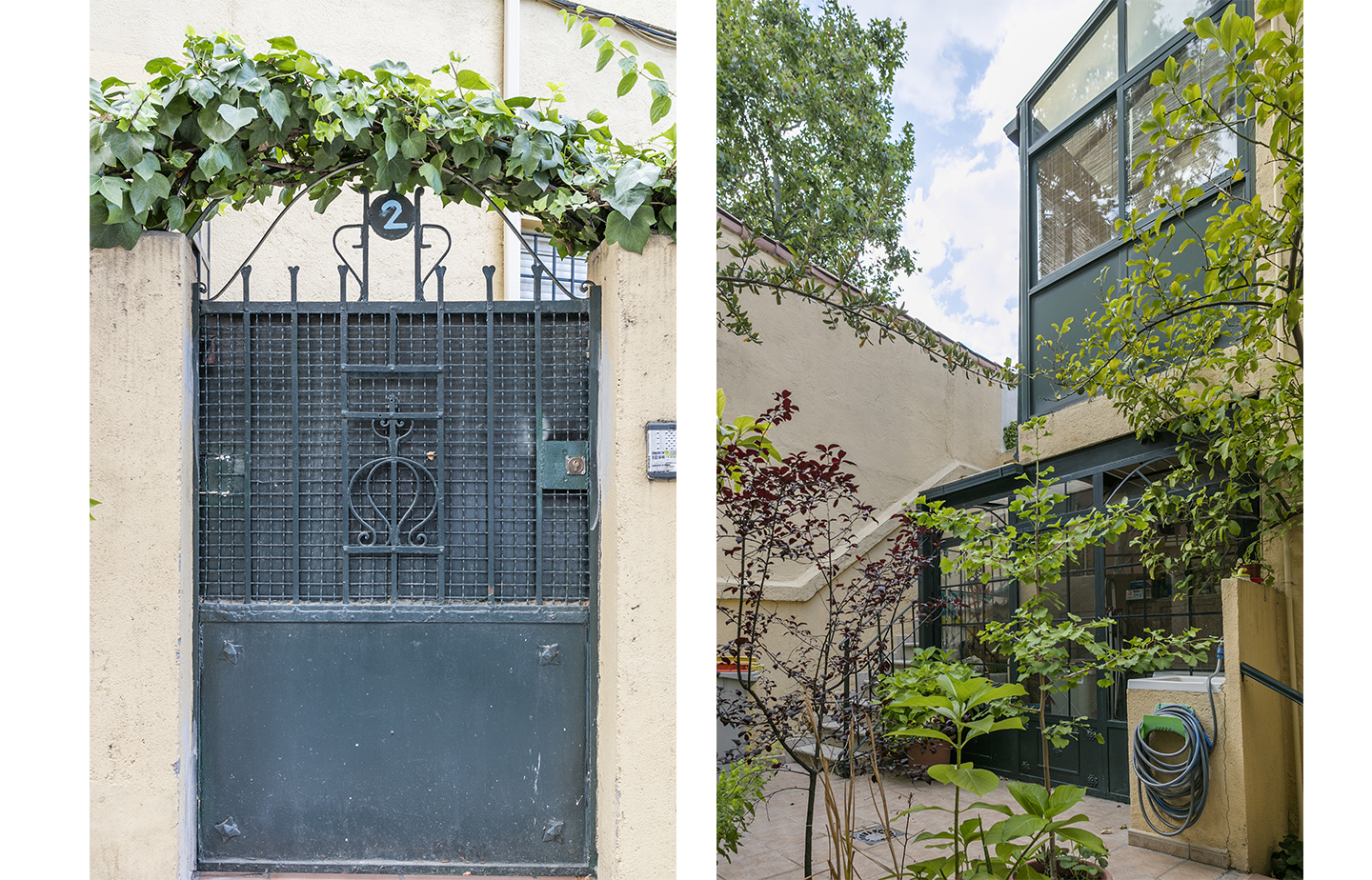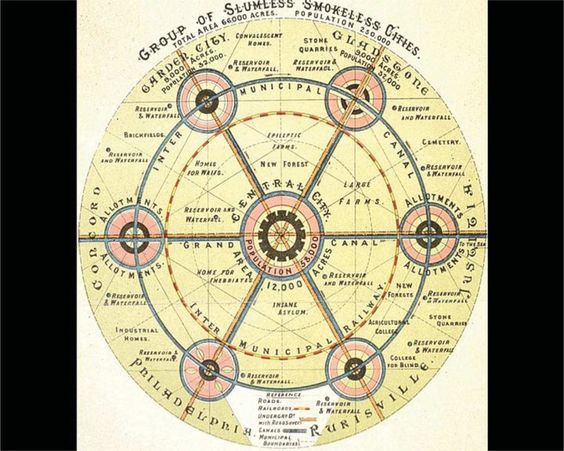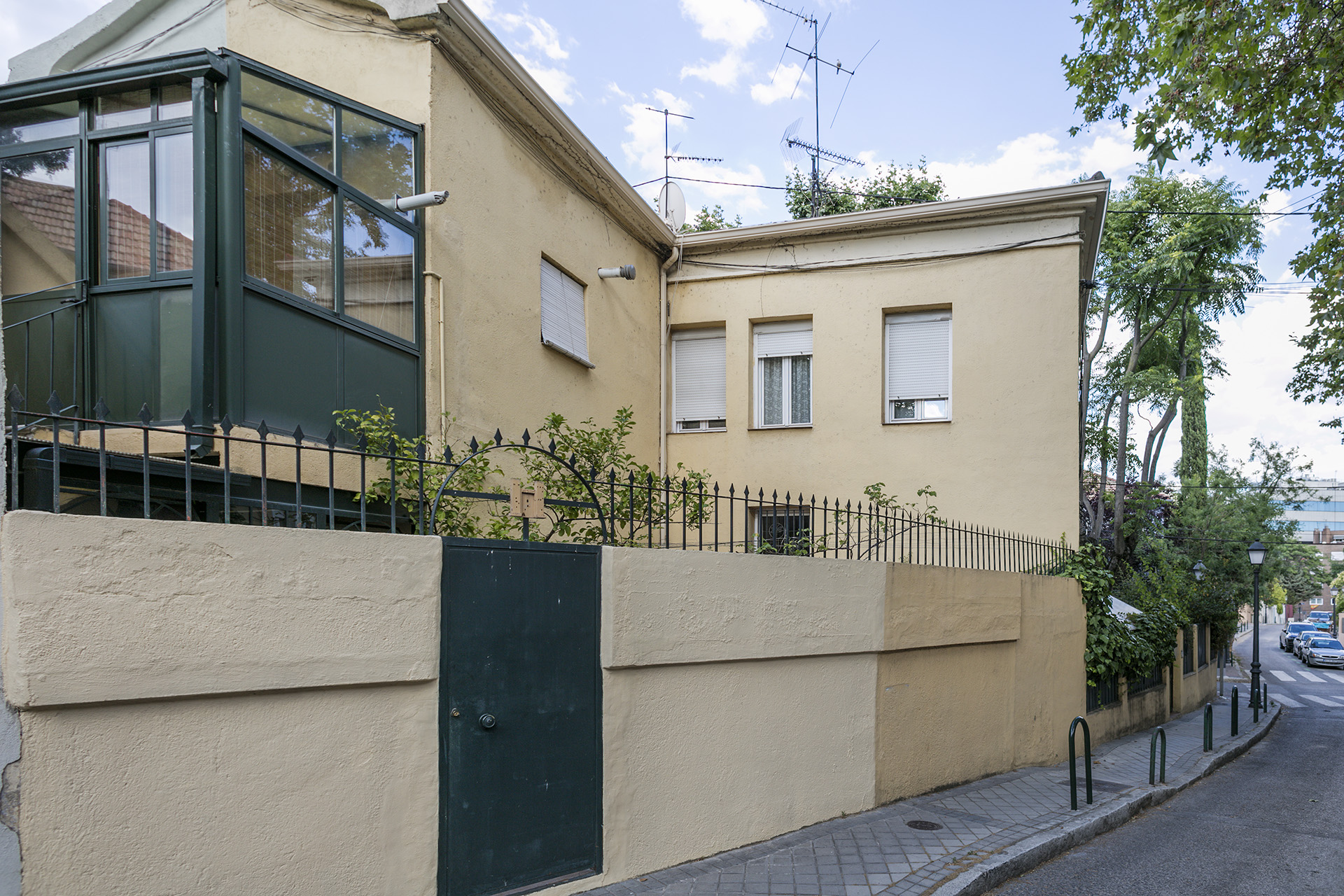A true urban oasis: Colonia Cruz del Rayo, Madrid.
Madrid’s first planned suburb, Colonia Cruz del Rayo still adheres to every maxim of Ebenezer Howard’s original plan, intended to create a Garden City for the Spanish capital.
A new model for urban development, conceived by British planner E. Howard in the twentieth century, the garden city is an urban community designed to promote a healthy, industrious lifestyle. A century later, this ideal seems more essential than ever, and visitors can experience it for themselves with a stroll through Madrid’s Colonia Cruz del Rayo.

Colonia Cruz del Rayo, in Chamartín lies a mere 15-minute drive from central Madrid. One of 36 planned suburbs or colonias in the city, it’s the most characterful and flamboyant of them all.
The neighbourhood’s boundaries are marked by Calle Príncipe de Vergara, Calle de Gabriel Lobo, Calle Rodríguez Marín and Calle Antonio Rodríguez Villa, with a charming circular plaza branching off into variously curved and straight one-way streets in an elegant star-like formation. Here we find an assortment of one- and two-storey homes influenced by the modernist school, with ornate façades, prominent eaves and elaborate balustrades. It’s an altogether unique part of the city: peaceful, iconic and with a style all of its own.

The Garden City Vision in Colonia Cruz del Rayo
The city planning movement founded by Ebenezer Howard rose to prominence following the publication of his book: Tomorrow: A Peaceful Path to Real Reform, superseded in 1902 by a revised edition, Garden Cities of Tomorrow. Howard’s vision was a network of quiet residential communities close — but not too close — to major urban centres, featuring abundant green space, low-rise housing and sweeping avenues and well supplied with schools, shops and landmark buildings.

These neighbourhoods would be carefully planned so that residents could enjoy a full social life while surrounded by nature: village life, just minutes from the big city.
The beauty of the colonias, yesterday and today: “They were a means to combat overcrowding, but more than that, they were a new, gentler and more diffuse model for urban life. The alternatives were flats, for the middle classes, or cramped workers’ cottages where sanitary conditions were poor. When tuberculosis ceased to be a major threat, density became less of a concern — until Covid-19 came along...” ”.
José María Ezquiaga – city planner, sociologist and mastermind of Madrid’s urban and architectural heritage conservation plan.
Those fortunate enough to live here can enjoy tranquillity, nature and an exceptionally high-quality urban environment with virtually no noise or air pollution. It’s an extraordinary part of the city and an excellent choice for our times, as we learn the value of wide open spaces where we can relax and enjoy everything life has to offer.

A Conservation Area of Historical Interest
Colonia Cruz del Rayo was declared a Conservation Area of Historical Interest in 1980, when residents fighting a string of redevelopment proposals won official protection for its urban and architectural heritage, preserving it for the city of Madrid.
Despite its eventful history, today the neighbourhood feels like a rejuvenating urban oasis, and it remains one of Madrid’s most liveable areas — with superb transport links, a growing range of high-quality leisure and shopping options, plenty of green space and the serenity we all long to feel on arriving home after a busy day.

References:
- Cruz del Rayo, historia de una Colonia modélica (1928) https://urbancidades.wordpress.com/2010/04/23/cruz-del-rayo-historia-de-una-colonia-modelica-1928/
- El barrio más londinense de Madrid https://www.thetrendyman.com/post/el-barrio-mas-londinense-de-madrid
- Cruz del Rayo, el nuevo TriBeCa madrileño https://www.abc.es/espana/madrid/abci-chamartin-triveca-botella-201204180000_noticia.html
- Vuelta a Cruz del Rayo https://elpais.com/espana/madrid/2020-08-05/vuelta-a-cruz-del-rayo.html
- La Ciudad Jardín Madrileña: colonias del ensanche https://urbancidades.wordpress.com/2007/09/29/la-ciudad-jardin-madrilena/
- Ebenezer Howard y la ciudad jardín. https://www.aacademica.org/teresa.montiel.alvarez/15.pdf